












Campur Penang
User research & tourism startup content strategy
UX Research, UX Design, Web Design
Campur Penang provides a space for cultural activities and workshops in a heritage area with its unique mix of food & beverage and souvenirs. It continuously looking to increase exposure and attract more tourists to the hub.
My role as a UX designer is creating a useful & usable website that provides researched information and services that address tourists' needs and concerns.
As a result, a new section named "Travel Guide" is created to provide a holistic guide about tourist attractions, accommodation nearby, traveling tips in Penang, and a clear direction to Campur Penang.
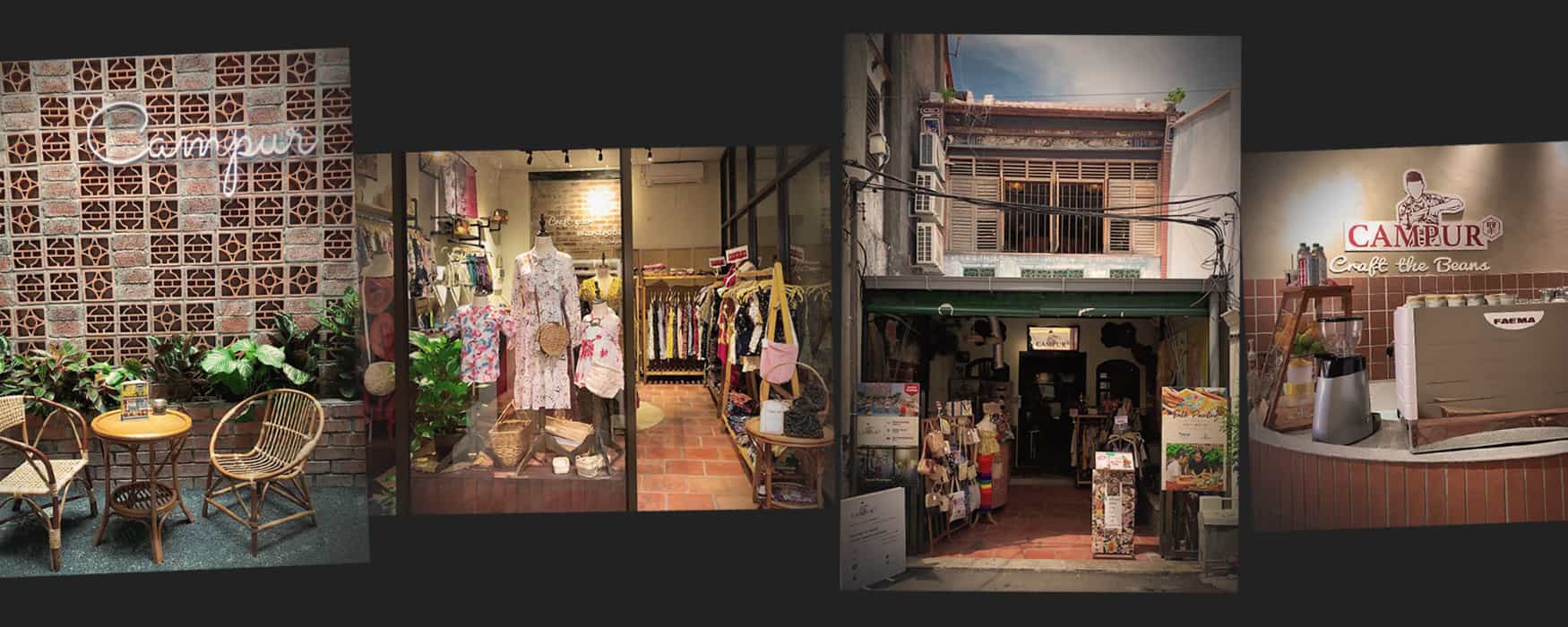
The stakeholder of Campur Penang wants to attract more tourists to visit his cultural hub.
Creating a website can reach that objective as it is an effective communication tool.
Hence, identifying information that addresses the concerns and needs of the tourists became the focus point of the project.
How can we design a website with the information relevant to both local and foreign tourists?
To increase number of tourists visiting Campur Penang through its website.
Double Diamond Framework is selected as it provides space for clear and flexible approach while keeping the objective in view.
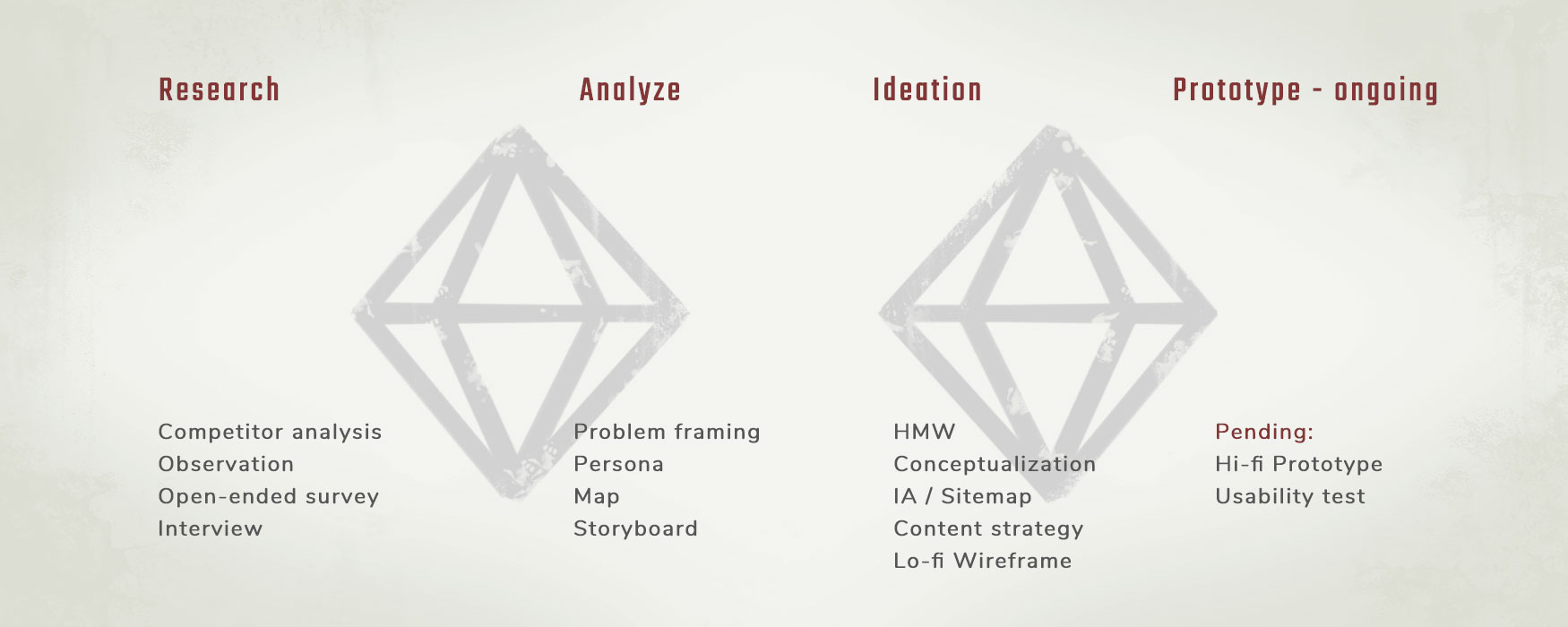
The project started with a competitor analysis to discover the strength and weaknesses of competitors and understand the position of Campur Penang in the market. The analysis includes criteria such as variety of services, effectiveness of website, and cultural significance. The findings of this analysis will translate to solutions during the ideation phase.
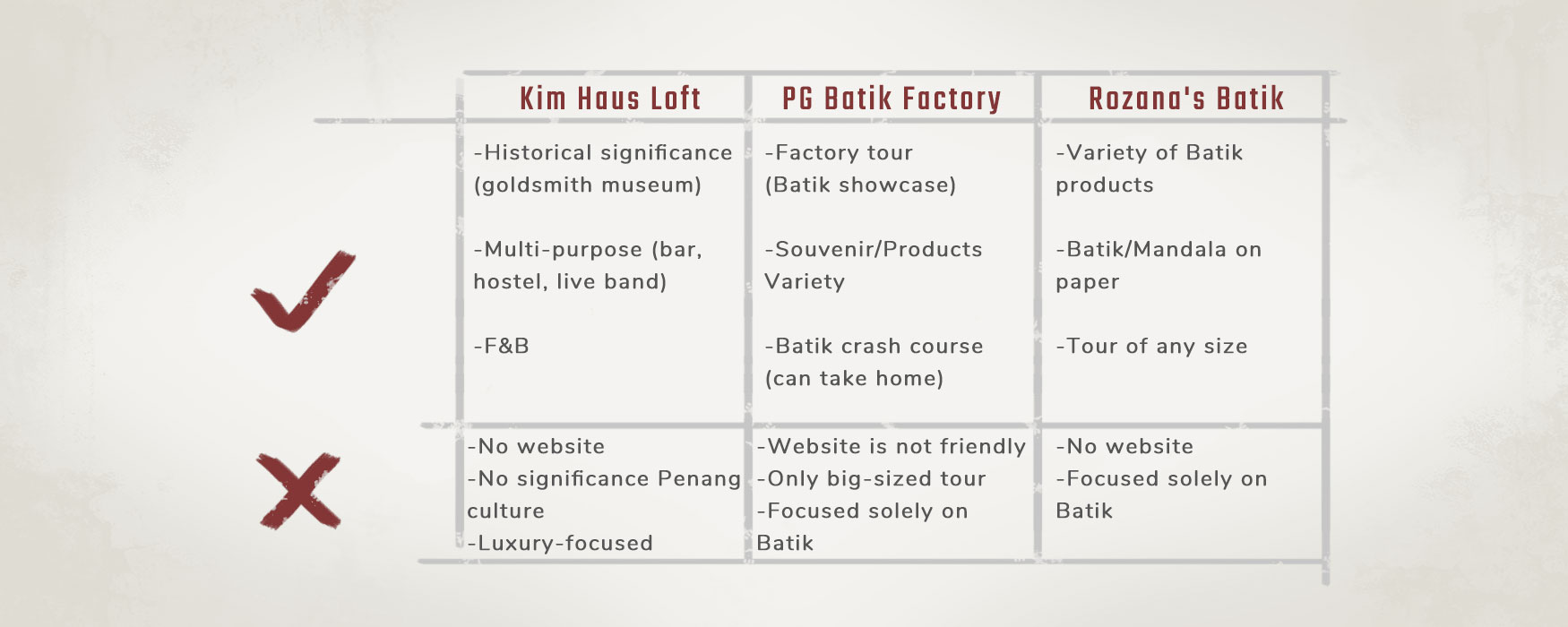
Understanding how users look for information of a tour online will provide valuable insight to build a user-friendly website framework.
The map flow below is summarized from making real-life observation:
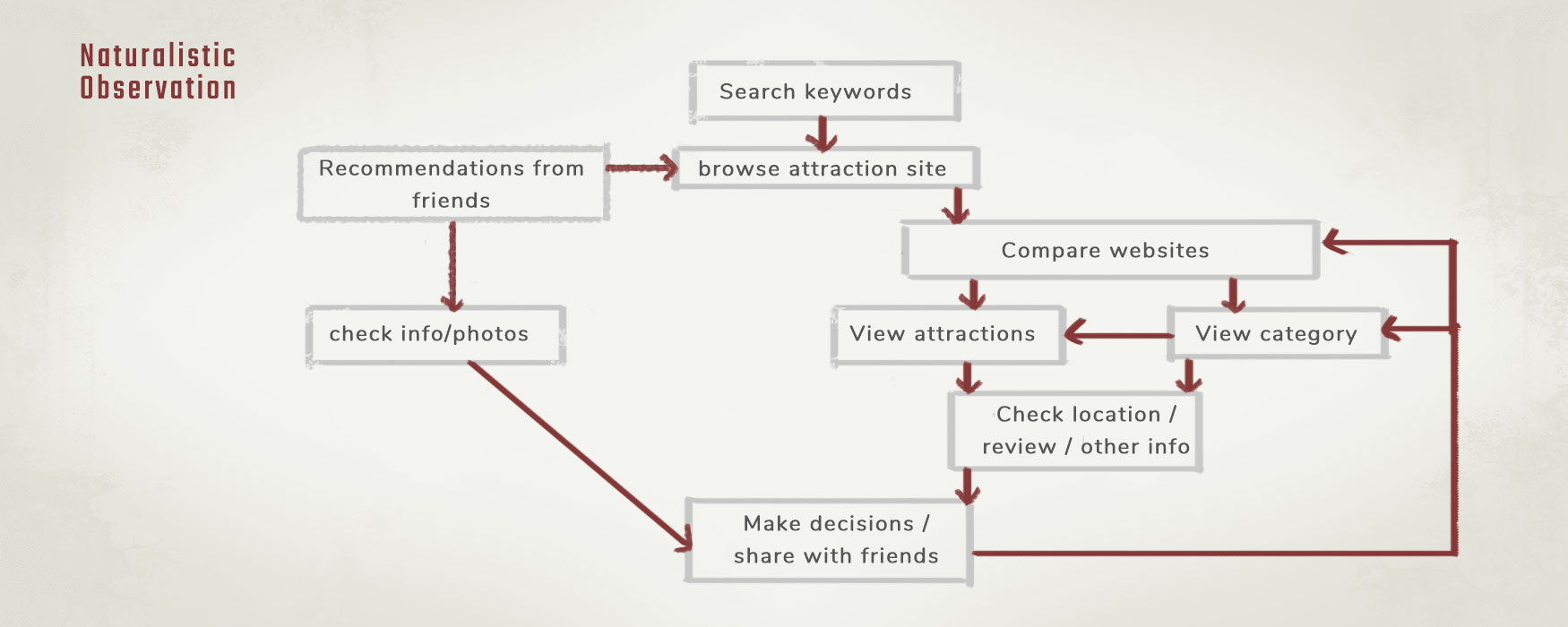
Aside from building a website that is easy to navigate, it is also important to provide information and service that address users' needs and concerns.
For that purpose, I used SurveyMonkey to ask open-ended questions to two groups of users, which are local tourists and foreign tourists.
To obtain accurate feedback, the questions are designed qualitatively to account for different life experience and preference of a tourist when planning a tour.
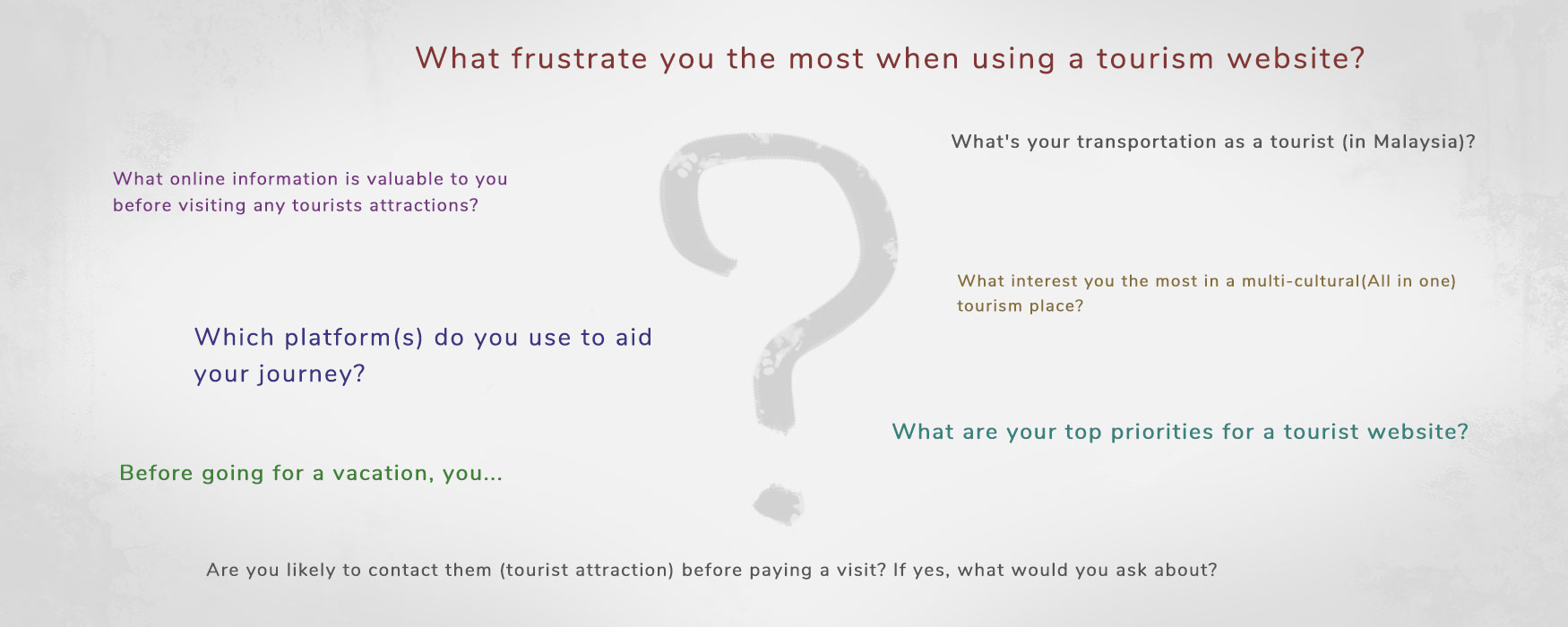
Both local and foreign tourists show common interest of tourist attractions, with top priority being Food, followed by Souvenirs, Art & Crafts, Handicraft showcase and finally Henna Tattoo.
They also showed preference of selecting site of attractions before looking for an accommodation nearby.
Both groups also prefer "light" activities such as eating and watching a show over "task-focused" activities such as attending workshops.
In contrast with local tourists who prefer to use Facebook, foreign tourists inclined to use Twitter as a search platform for tourist information.
Also, foreign tourists usually rely on pay-taxi or e-hailers such as Uber or Grab as a choice of transportation while local tourists prefer to drive themselves.
From the findings above, a map is drawn to strategize contents that are relevant and appealing to our users.
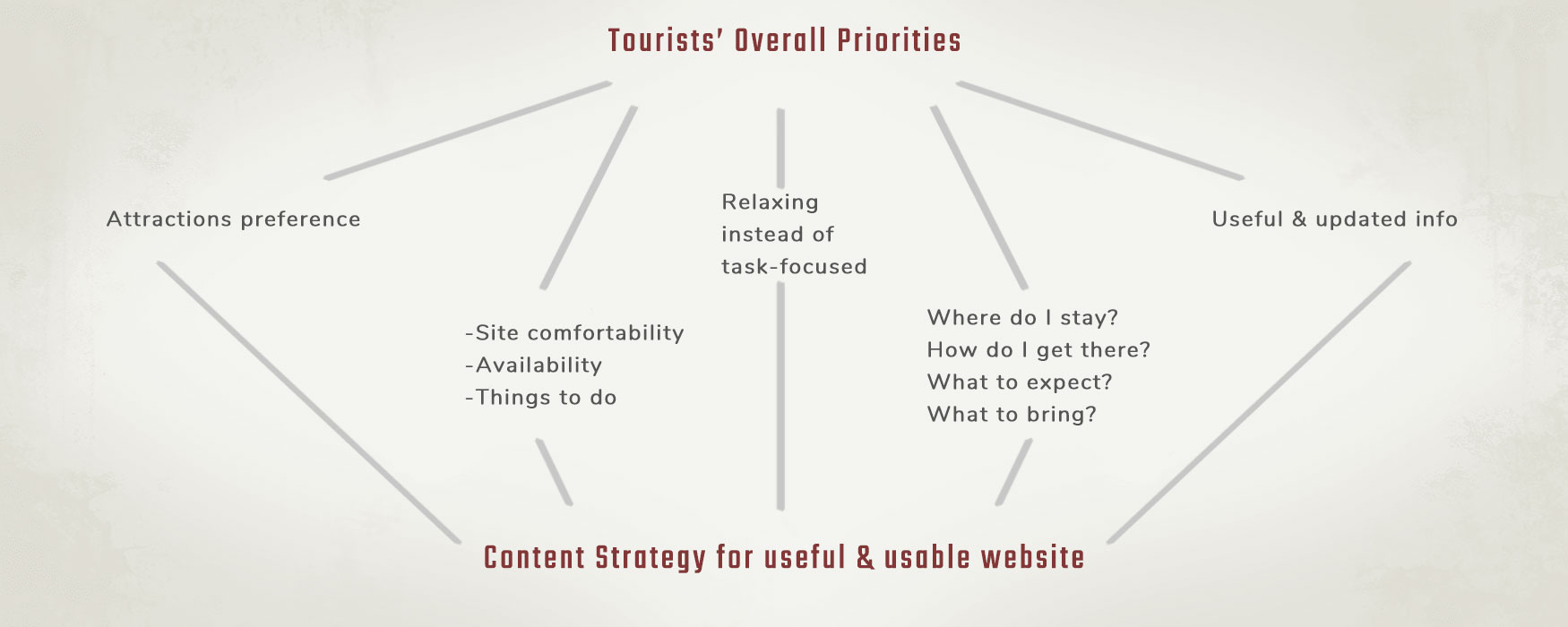
From the map above, I decided to create a persona for both local and foreign tourists as analysis tools.
I streamlined the persona profiles by excluding misleading criteria such as age, race, marital status, job and background. Instead, goals and motivation, challenges and obstacles, and brand loyaties are included to ensure the website meet the needs and concerns of both groups of tourists.
I also included a quote that highlight their respective personality.
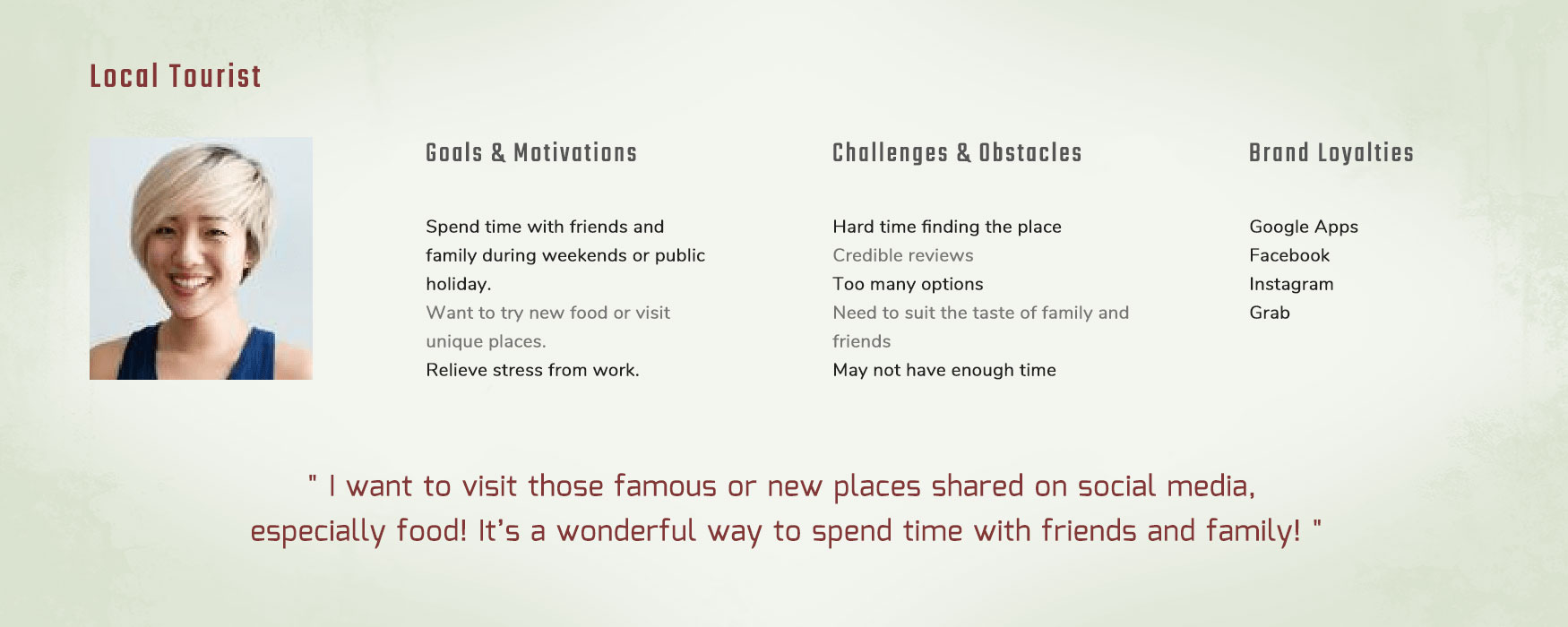
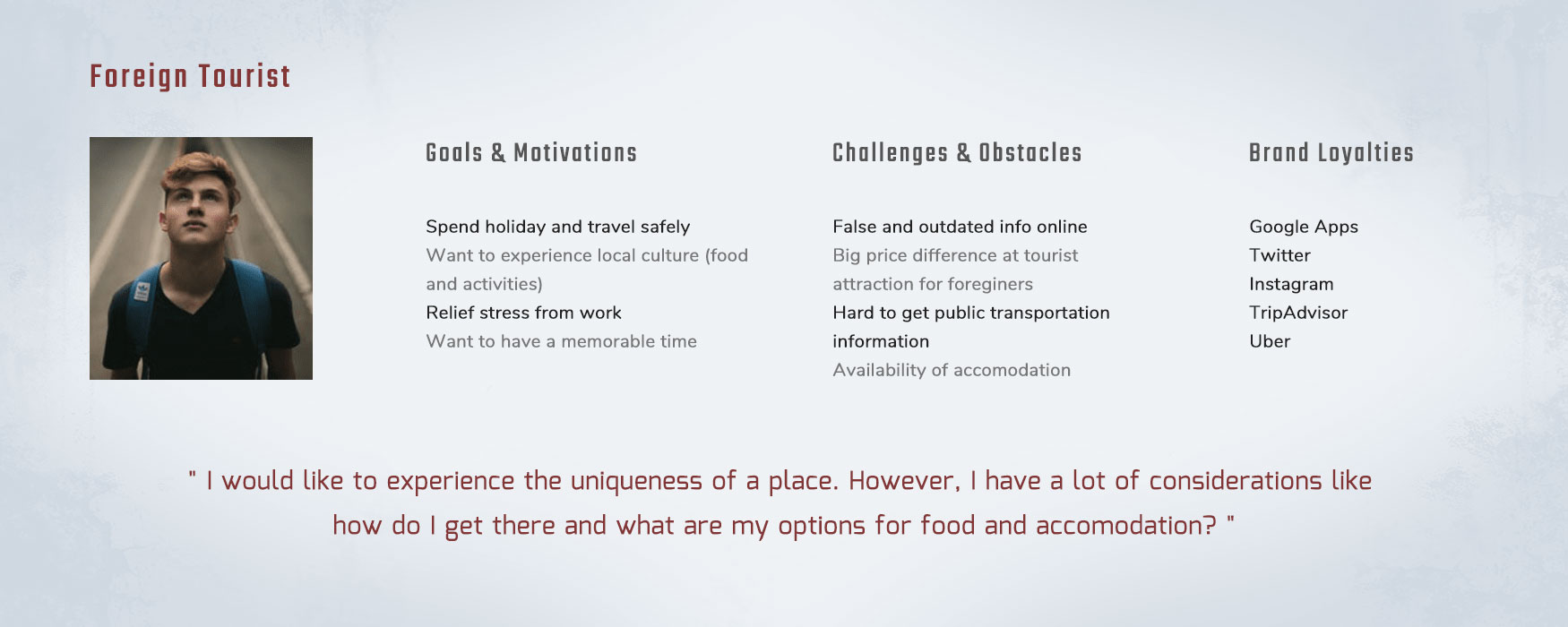
I also created a map and storyboard to give the stakeholder a clearer picture of the processes to improve website navigation behaviour and address travel preference of tourists, which are the key study in the Research stage.
We agreed that the website should not only provide relevant information to tourists who are planning a trip but also assist them to reach Campur Penang easily during travel.

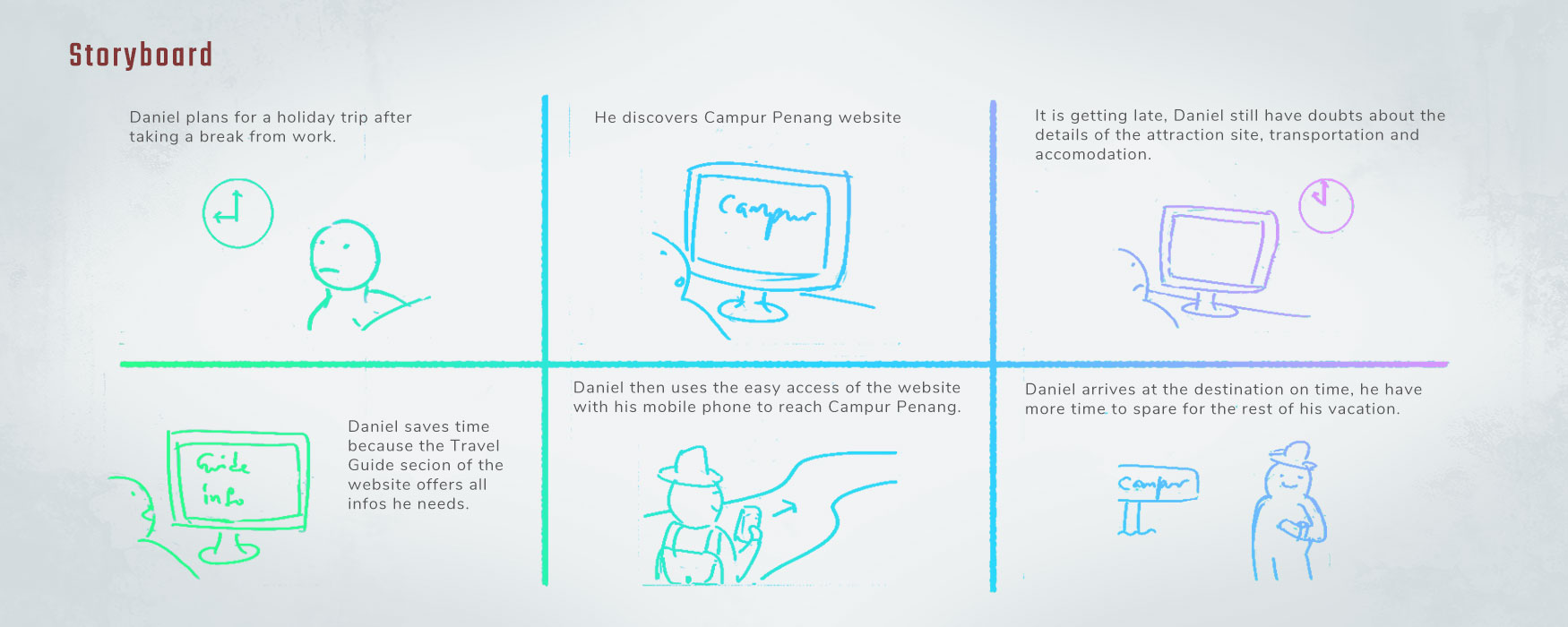
I employed the “How Might We” method to turn framed problems into opportunities with the stakeholder.
Aided by the persona, map and storyboard, we came out with solutions to build a website that is user-friendly and provides relevant informative for both groups of tourists.
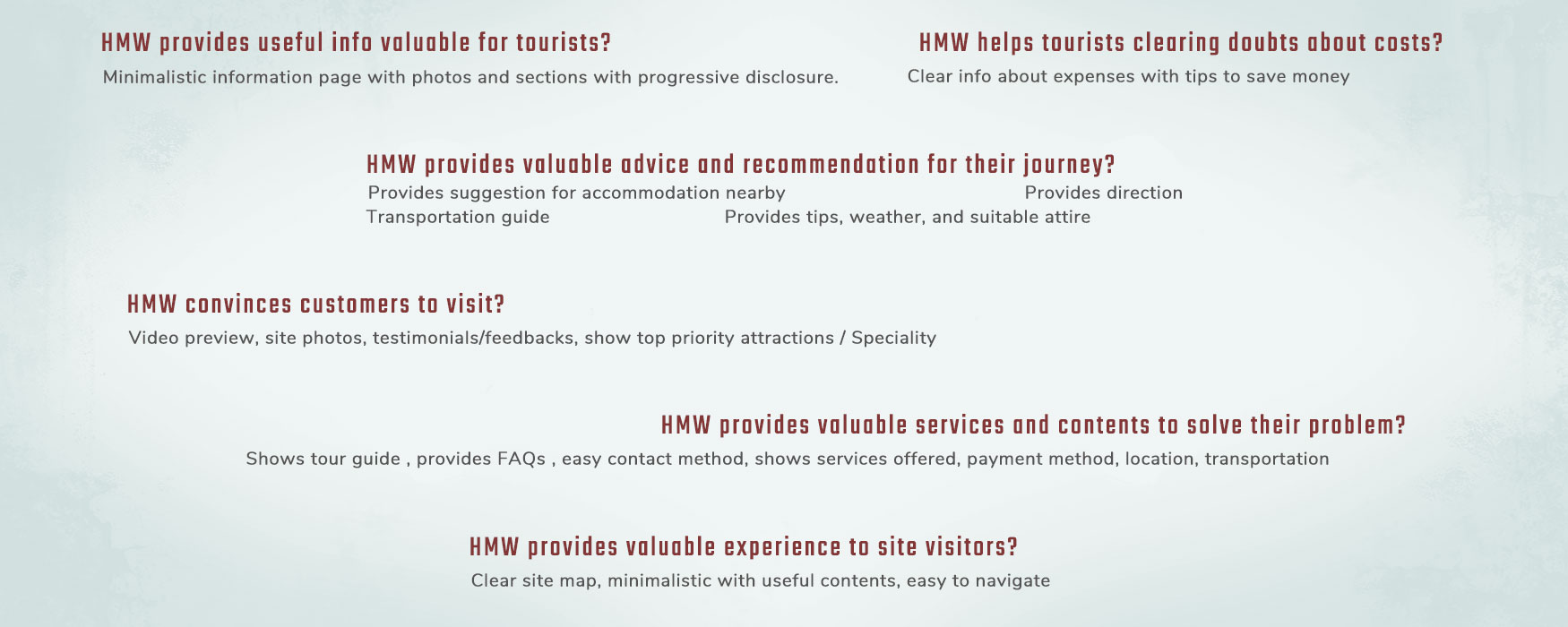
We created a section called "Travel Guide" that is filled information that addresses the needs and concerns of tourists with data collected during the Research stage.
We decided to include links to external apps such as Google Map and Grab in the website to make it easy for them to reach Campur Penang.
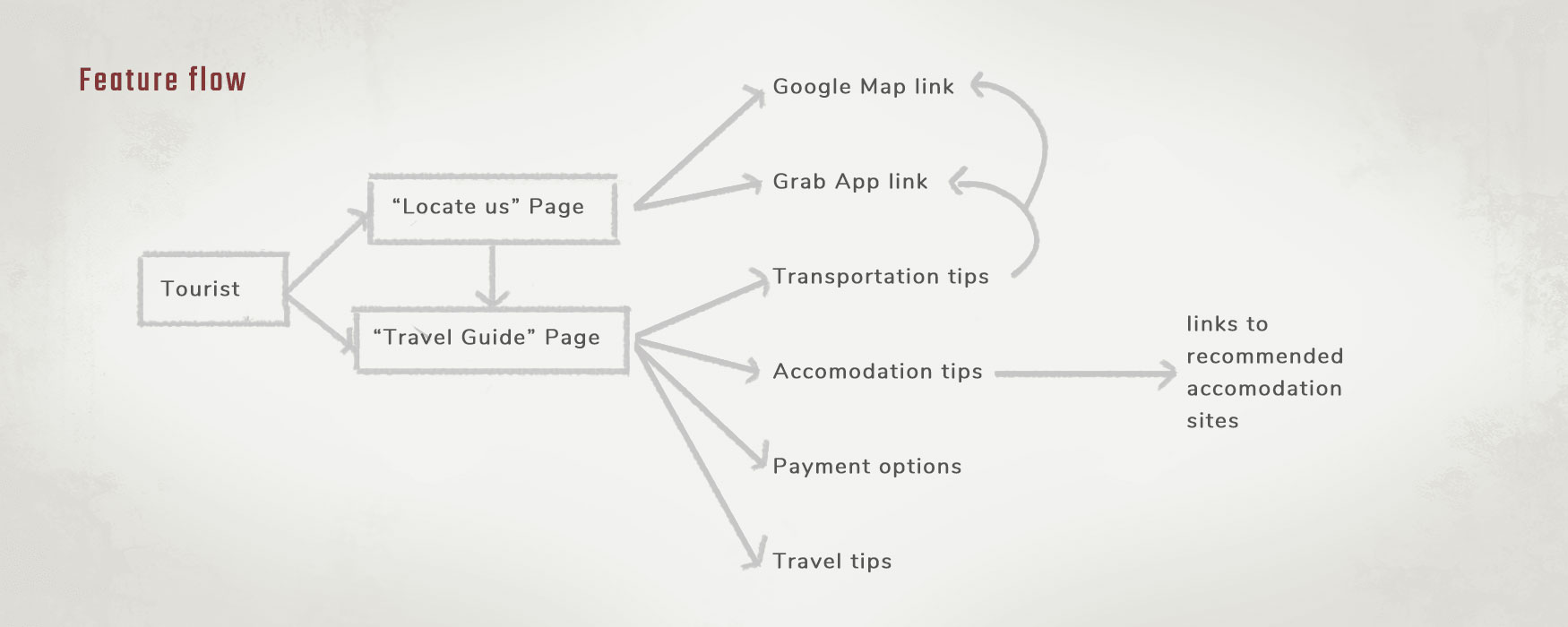
We used OptimalWorkshop to ask tourists to sort information according to category that reflect their preference and priorities.
The result is concluded in a summarised sitemap below:
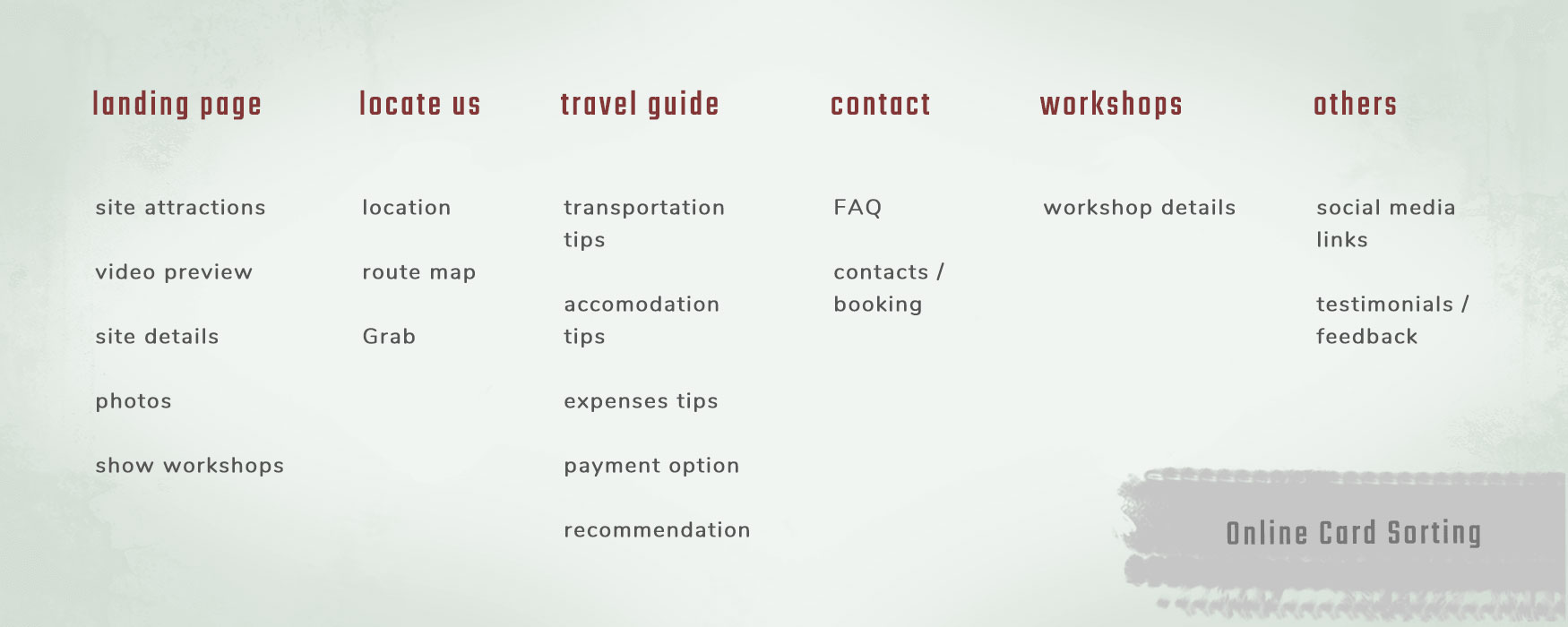
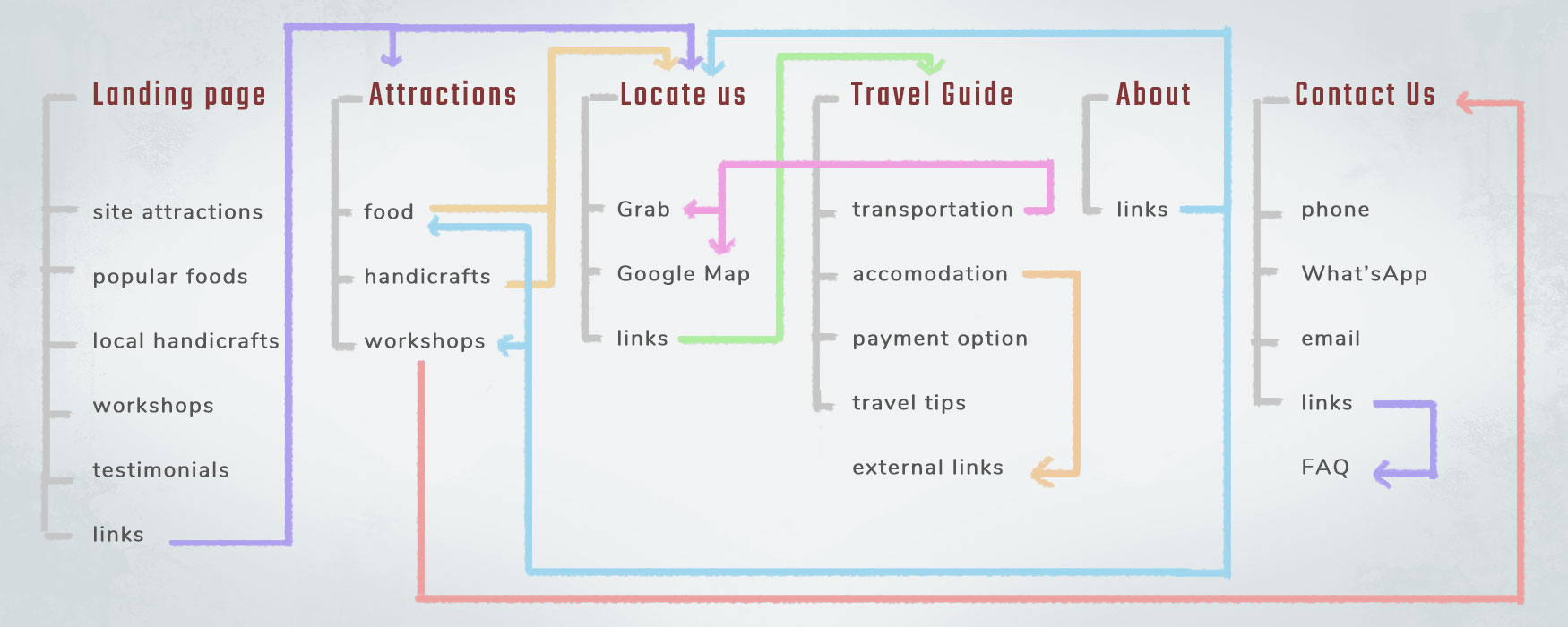
Stakeholder decided to rebrand and restructure the business model of Campur Penang. While the user experience research has been concluded, I have to halt the website design to match his latest corporate branding in the future.
Following the rebranding and restructuring, marketing content such as product description, photos and videos have to be remade for the website.
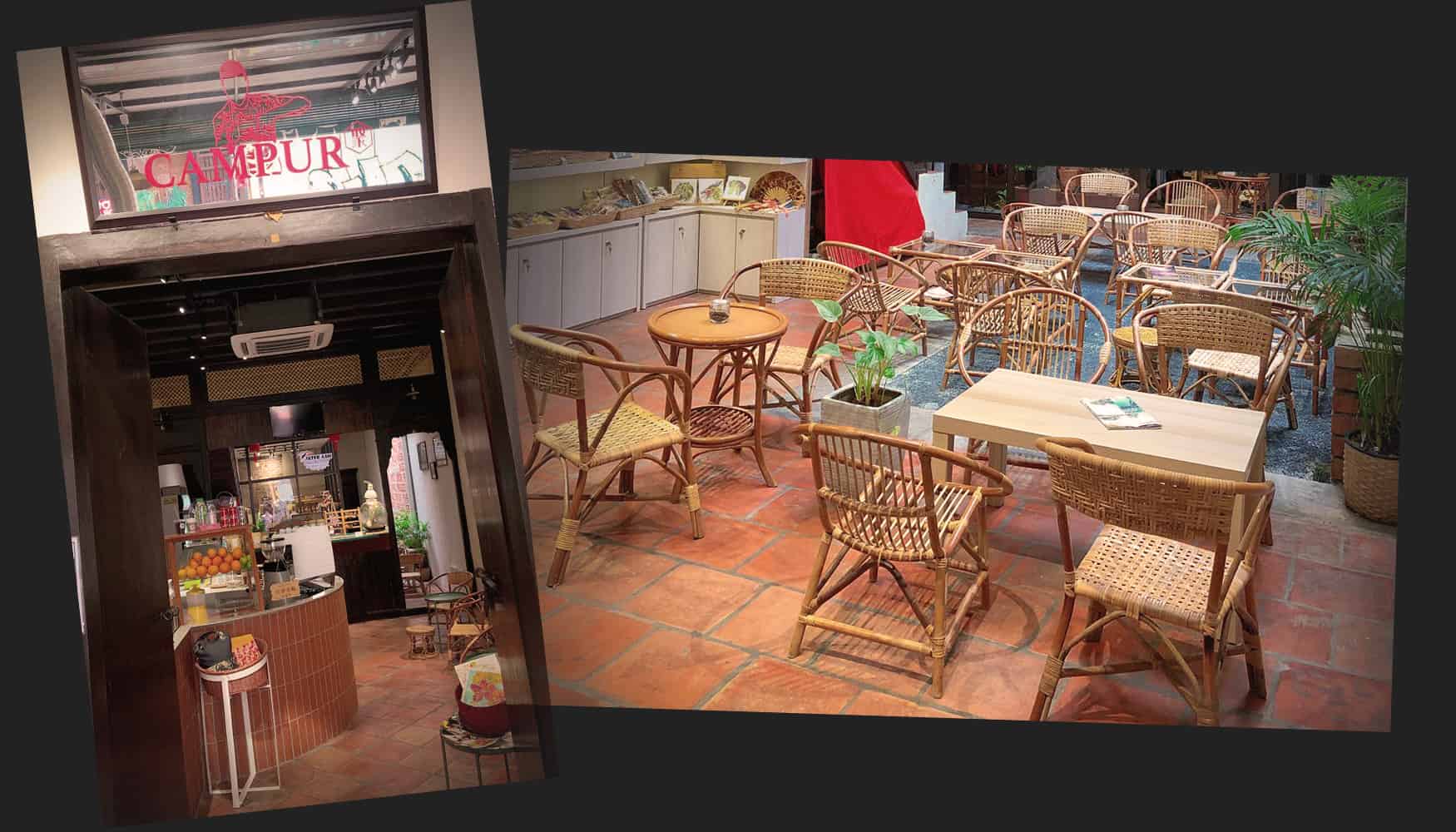
In anticipation of major changes due to the rebranding and restructuring, I prepared a low-fidelity digital wireframe with concept that are relevant, appropriate and useful to enable the stakeholder and marketing team to understand the navigation behaviour, and needs and concerns of the tourists based on the researches.
I also arranged the content by popularity of attractions as this site is designed for tourists.
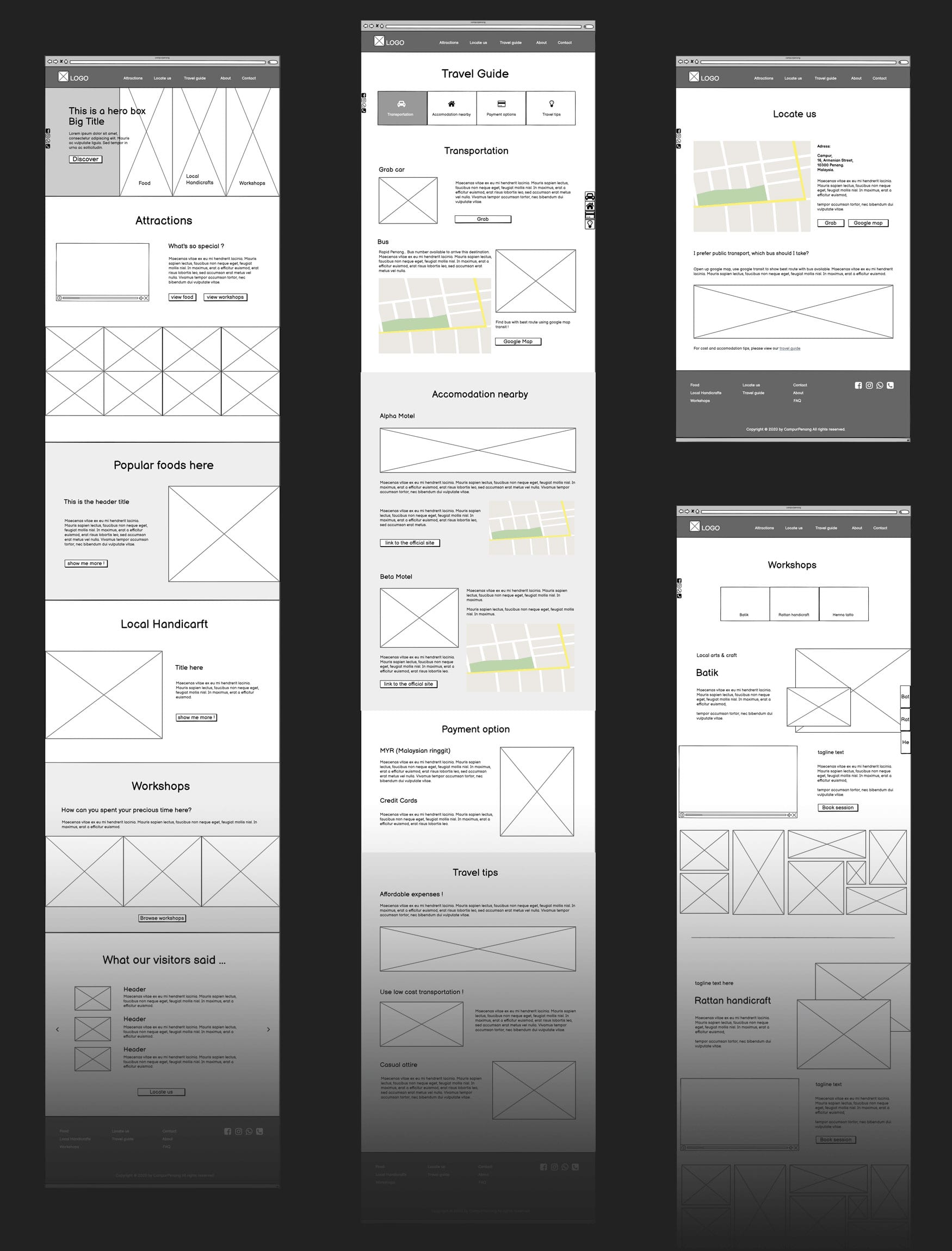
I created clickable wireframes to let the stakeholder and marketing team have a better visual understanding about the website navigation processes.
I created the wireframes with Balsamiq and chose its "sketch" feature to reflect the current incomplete state of the website. A clean design is also used to avoid misunderstanding that the wireframe represents the final product.
I also used InVision for its interaction feature and also share the wireframes with the stakeholder and marketing team.
This is an ongoing project handedover to the stakeholder and marketing team to finalize their rebranding and restructuring.
I fully anticipate contents that come after the rebranding and restructuring of Campur Penang will have a new set of challenges. Depending on the adjustment made to the elements, a new set of wireframe might be required.
For my future reference, I will suggest to stakeholders to prepare complete content before starting a project to save time and effort.
I identified the newly added section "Travel Guide" is the focus point that provides the most values to tourists. By channeling time and energy according to priorities, I am able to focus on meeting my client's business goal and users' needs in a timely manner.
View Next Project ↓
